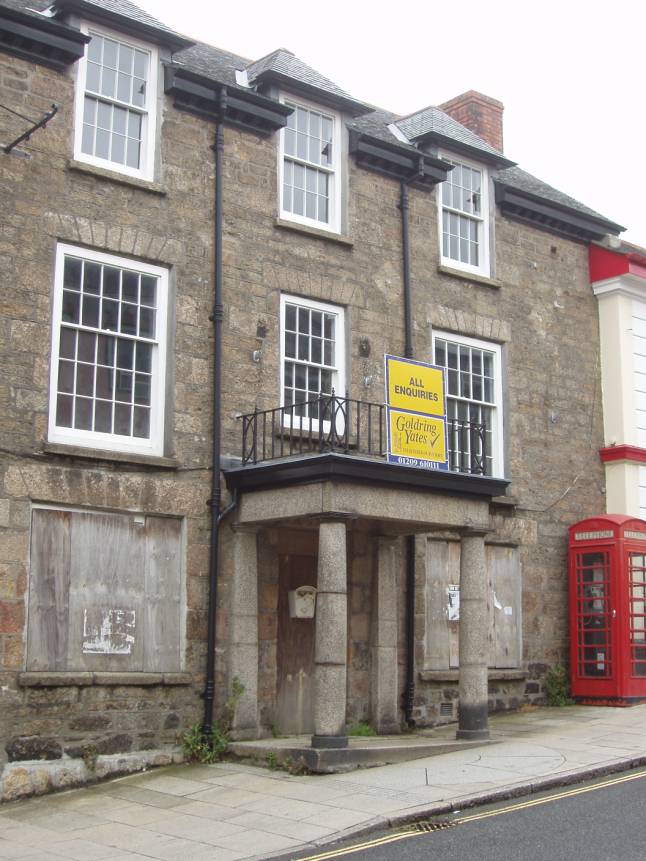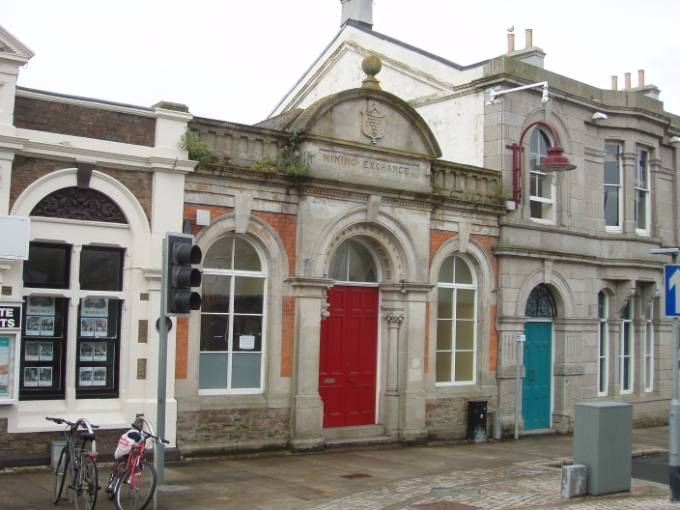
Having
re-investigated some family homes, we turned our attention to the town centre.
The main road through Redruth is called Fore Street. Regular readers may
remember the Cornish language version of that name…..
But
first we walked through Alma Place.

Here
we see the Mining Exchange – surely well known to members of the family who
were in mining, Chief amongst these must have been ‘Captain’ Kit Williams
who had mining engagements around the world but no doubt was in Redruth from
time to time to provide the odd child for his wife and to make sure the shop she
ran was doing OK.
Nearly
next door there’s a Coffee Tavern. Wesleyan Redruth
- and the ancestors were amongst them – no doubt found the coffee house
a more suitable meeting place than the pubic bar.
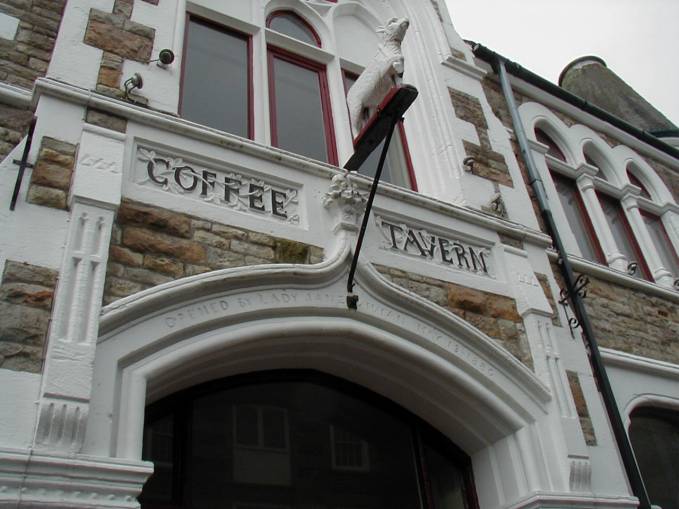
It
has a fine lamb sign over the arch.

It
also has various tablets and messages to commemorate people who were, no doubt,
well known to the family. Above the arch it tells us that the tavern was opened
on May 13th 1886 by Lady Jane Vivian – just over two years before
Granny was born.
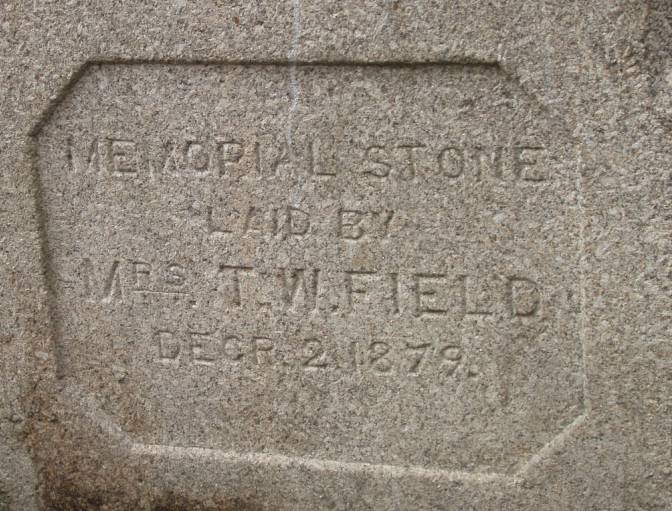
It
had been a while in the opening for the memorial ‘foundation’ stone was laid
by Mrs T W Field in December 1879
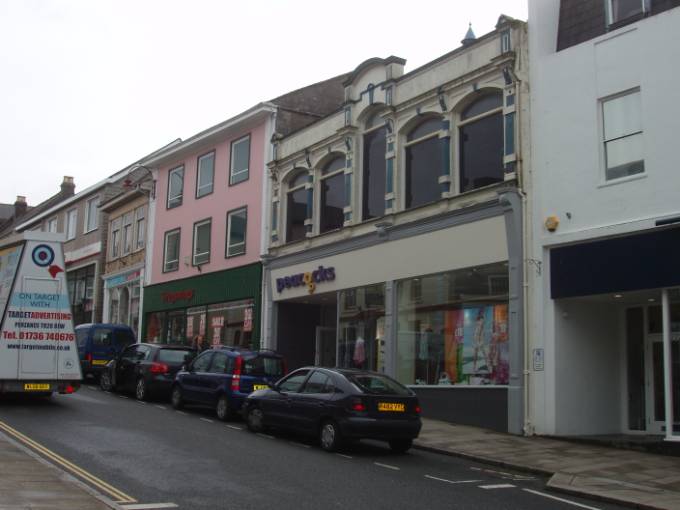
We
rounded the corner on to Fore Street (Stret A- Rag). And there was the Peacocks
Store at 69 Fore Street. Part of this was once the drapery shop of Granny’s
dad – William Hall. Like the house on Bassett Street, I don’t think they’d
recognise it.
Redruth
was a mining town. These days it has no very clearly defined function, but
Cornwall is good for tourists so Redruth, needs must, cashes in. And actually,
they do it rather well with explanation boards and statues helping to brighten
the scene.
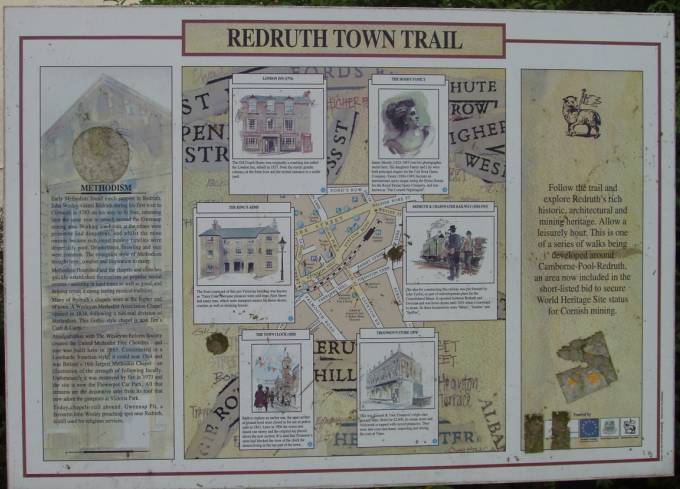
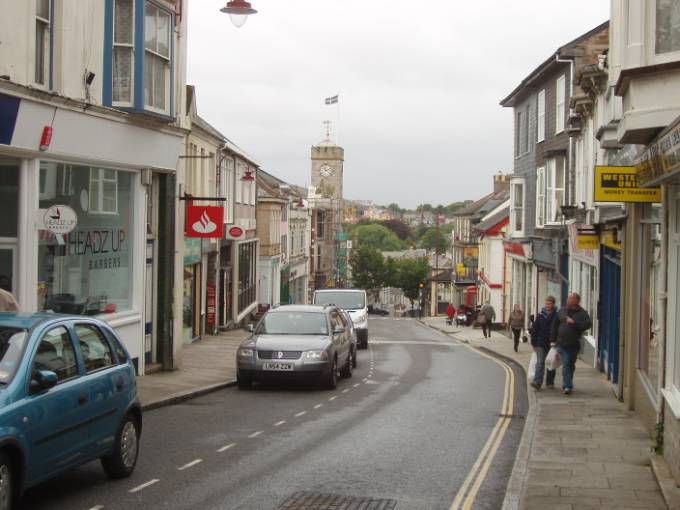
This
looks down Fore Street from the East End. It was quiet on this bank holiday,
with not many shops open – although a rather good pasty shop was able to get
some money off us.
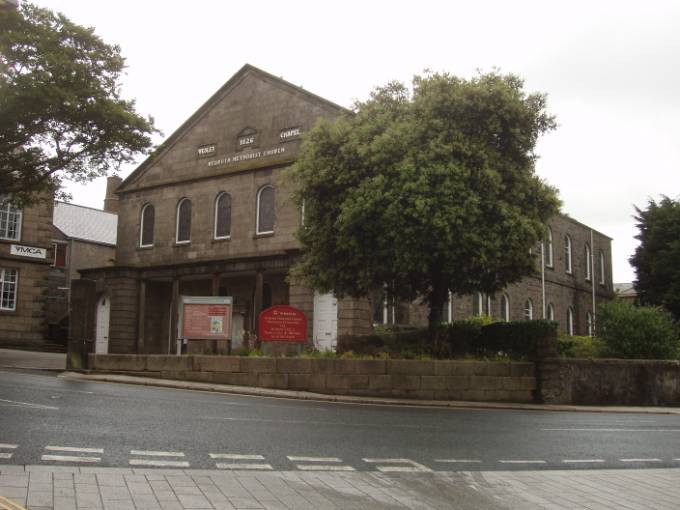
Here
we see the Wesleyan chapel where Granny and Grandpa married on 4th
August 1914. He, too, was a Redruth born man although his parents both came from
Gloucestershire.
Just
behind the chapel is the railway station.
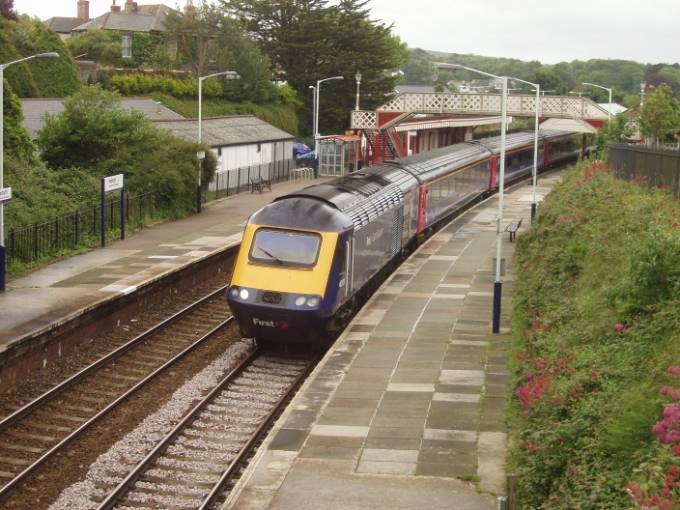
My
luck was in as with no wait, a London bound train headed through. I dare say
there was a sad parting here when Granny’s sister, Ada, left for South Africa
with her husband (maybe husband to be). Their
son Clement was born in South Africa in 1903 and like his mother, he never
returned to England. He was shot and killed in 1963. Ada, his mother continued
to send airmail letters to Granny until she died a couple of years after her
son. There are many postcards to be found of this station crammed with people
off on the emigration journey.
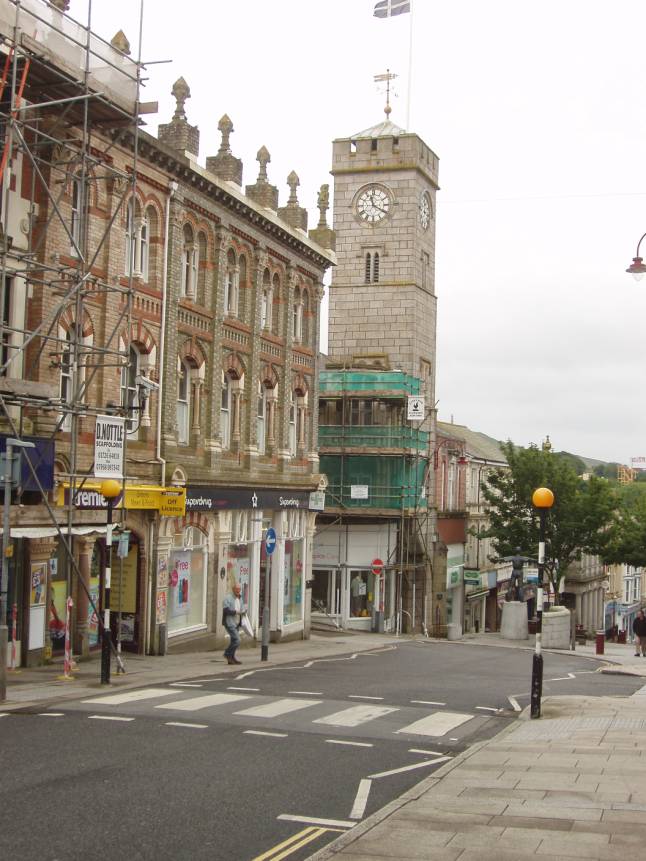
This
picture is taken from just about outside William Hall’s shop and as in
virtually all the old cards, his shop is just missed off. The clock tower is
flying the Cornish flag but it is the building on this side of the clock, now
housing Superdrug, which is of distant family interest. It was built by a pair
of successful grocers and was always known by their surname. It was and is,
‘The Trounson Building’. William
Hall’s mother in law – so Great Great Granny had been born as Grace Trounson
and she was distantly related to the grocers. The grocer Trounsons had spare
money for decoration on their building.
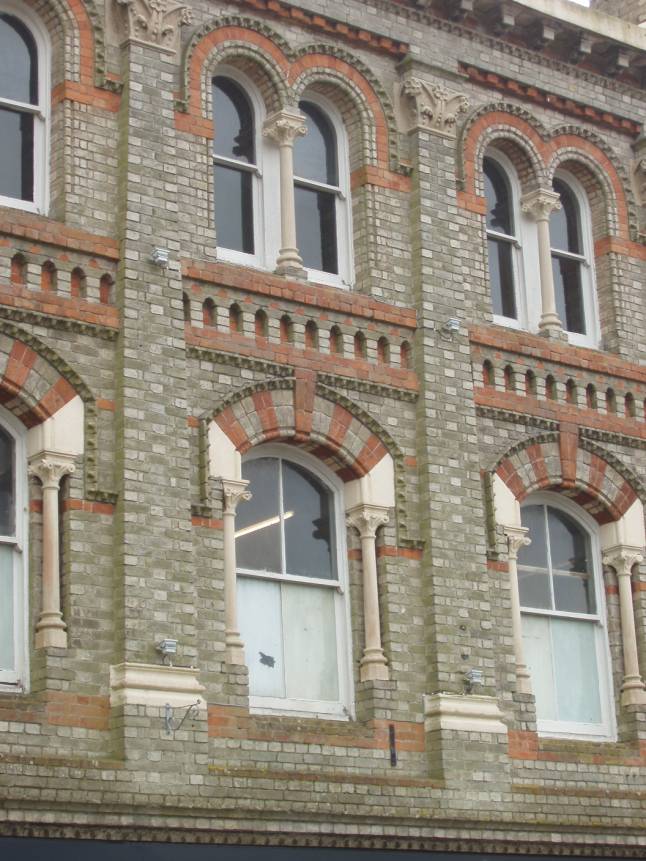
There
we have it with bricks in a variety of colours and patterns, arched windows and
pillars. All date from the 1870s.
This
set will finish with a building opposite William’s shop. Perhaps this might
have been recognisable to him as well as the Trounson one.
